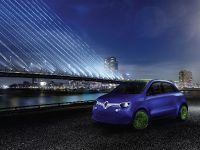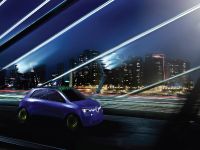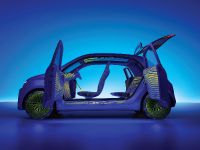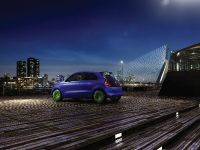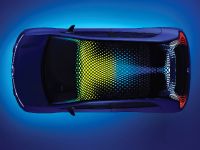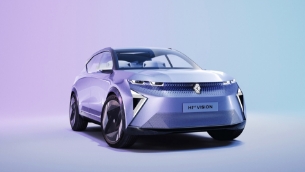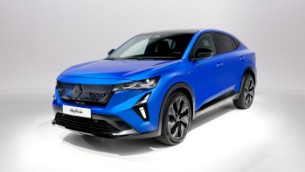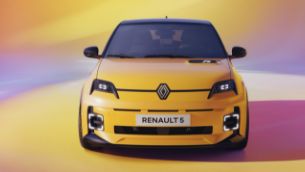Renault Twin'Z Concept Revealed
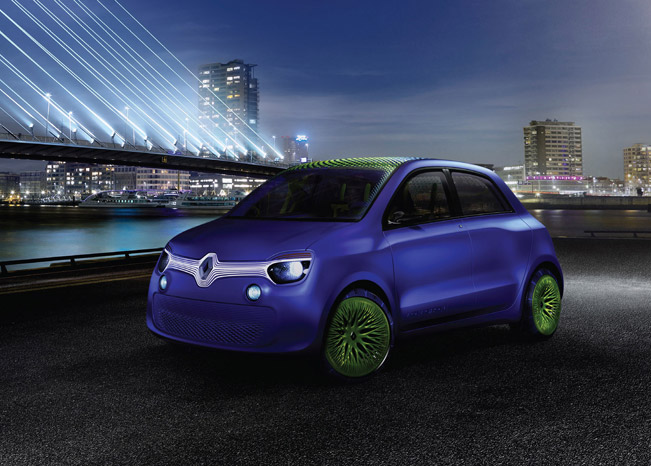 Renault Twin'Z Concept is a joint project between the French brand and the British designer Ross Lovegrove. This vehicle brings together two worlds and is inspired by the mixture of the design used in furniture and automobiles.
Renault Twin'Z Concept is a joint project between the French brand and the British designer Ross Lovegrove. This vehicle brings together two worlds and is inspired by the mixture of the design used in furniture and automobiles.
Twin'Z illustrates Renault's new design strategy. The concept is fun, modern and artistic take on the city car, and is inspired by the emblematic Renault 5 and Renault Twingo. In addition, the Twin'Z is an all-electric car with rear-wheel drive and a rear-mounted motor.
The role of the British designer Ross Lovegrove in this project was to enhance the aesthetics of the vehicle. The effect is a sophisticated blend of technology and refinement, and a combination of unprecedented play on light and organic forms.
In general, the Twin'Z is an electric supermini, which has an architecture that includes a rear-mounted motor and batteries located beneath the floor, and in addition it frees up exceptional cabin space and delivers high quality handling that makes it enjoyable to drive.
For this concept Ross Lovegrove found his inspiration in the world of nature. He was guided by a quest for a harmonious encounter between the automobile and its environment. Additionally, Laurens van den Acker is sensitive to this refined, human approach which is inspired by the world of nature and the opportunities unleashed by the latest digital 3D modelling technologies.
The team of the designer was given the task to provide the finishing details to Twin'Z's bodywork: bumpers, lights, grilles, LED roofscape, wheels. His studio was also responsible for designing the interior, including the choice of colours and materials, in conjunction with Renault.
Furthermore, the Twin'Z is only 3.62 metres long, but it has high waistline, and is equipped with 18" wheels. Its all-electric, rear-wheel drive architecture allows the wheels to be pushed out to the car's extreme corners in order to deliver solid grounding and large platform.
In terms of exterior, the concept is painted in striking blue color, which pays tribute to 20th century French painter Yves Klein. It is almost like a satin finish and it suggests that the pigmentation is inside the body and not applied. The soft clear-coat finish produces a velvet-like feel, while the iridescence lifts the car's ‘electro-natural' appearance.
What is more, the design of the grille design makes a vortex effect. It channels the air flow and minimizes the turbulence thus enhancing the aerodynamic performance. The same motif has been embossed into the rear bumper as an echo of the lighting signature.
Next, the Twin'Z's front and rear doors are hinged at the front and rear respectively and open electrically. When one looks at the wheels and tyres, one surely sees that when they were designed the aim was to resemble a single entity. The wheels include a glowing green finish and their design is based on intelligent growth structures inspired by nature. The solid central core splits into slender branches which strike out towards the rim. The tures on which this Renault model runs were developed by Michelin.
Twin'Z's all-LED lighting allows controlled light patterns to be obtained and emphasizes the car's lighting signature. The headlight assembly is minimized in order to give a graphic effect, and in addition a sequence of LEDs also extends from the grille to the rear bumper via the roof.
A pattern of light originates from the Renault lozenge badge and flows towards the head lights before climbing up over the windscreen pillars, along the roofline and then back down to the rear bumper. All this brings the Twin'Z alive.
In addition, LEDs can also be seen on the glass roof which is designed in layers and forms animated patterns. There are no conventional door mirrors here because they were substituted with an integrated video camera that has been aerodynamically ‘liquified' within the body. The rear clusters have made way for LED lighting incorporated into the glass.
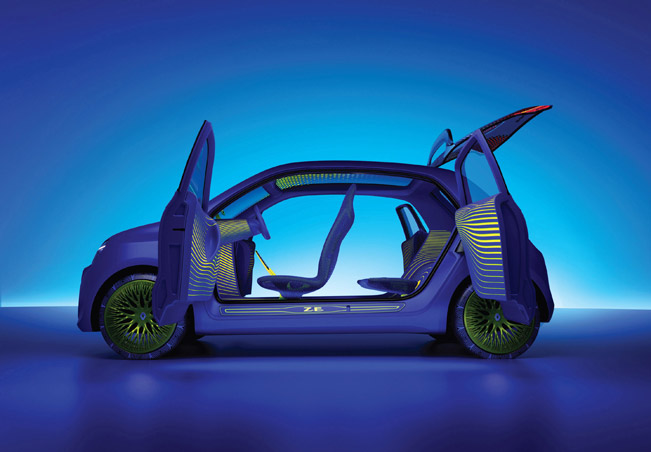
How about the interior of this car – it is as exceptional as the exterior. Although the model has compact proportions, it delivers spaciousness to the occupants. The double floorpan results in high-up driving position, which in turn contributes for a better view of the road and surrounding environment.
When one sits in this concept one feels the lightness and purity, thanks to the rear-hinged rear doors and the ensuing absence of a B-pillar which reveal a panoramic view of the cabin. Milled bi-colour lines circulate round the entire cabin. They offer a sense of flow of energy, lighting up the interior with a luminescent green that maps its topographical forms.
What is more, the four lightweight seats have been created as small as possible. They include green frames which "grow" naturally from the floor and have been upholstered in a 3D woven, self-cushioning, lightweight blue textile which is both waterproof and flame-resistant.
Here the LEDs also play a crucial role. They have been embedded into the frame's branches in order to pick out their forms and illuminate the interior. Next, the Twin'Z's steering column immediately draws the attention. Here one can't see a dashboard, which means that front occupants enjoy exceptional room.
The utilization of Human Machine Interfaces has been reduced and brought to minimum. Instead of a dashboard one can see a single tablet with a touchscreen display that is mounted on a centrally-positioned post. The tablet takes care of everything: heater, seat adjustment, lights activation, control of the roof, GPS guidance system, in-car connectivity, and etc.
Renault Twin'Z Concept Technical Specifications:
- Length: 3,627mm
- Width: 1,705mm
- Height: 1,506mm
- Wheelbase: 2495mm
- Weight: 980kg
- Top speed: 81 mph
- Range: 100 miles
- Rear-mounted 50kW (68hp) synchronous electric motor with rotor coil
- Maximum torque: 226Nm
- Four lithium-ion battery packs spaced evenly beneath the floor
- Voltage: 96V
- Drive: rear-wheel drive
- Transmission: direct drive with reducer gear and forward/reverse invertor
- Specific Michelin tyres: 205/40 R18
- Ross Lovegrove-designed 18-inch aluminium alloy wheels
- Front suspension: MacPherson-type arrangement
- Rear suspension: double wishbones
- Adjustable Ohlins dampers
- Chassis: tubular frame
- Carbon fibre bodywork
Source: Renault
